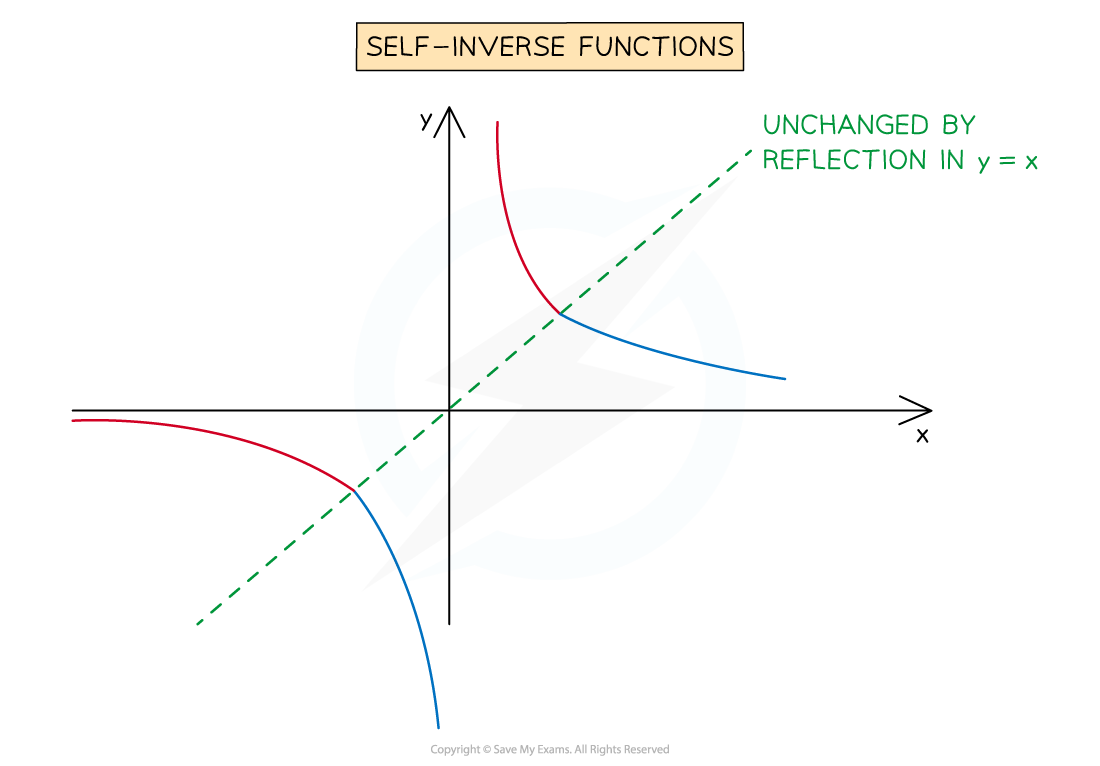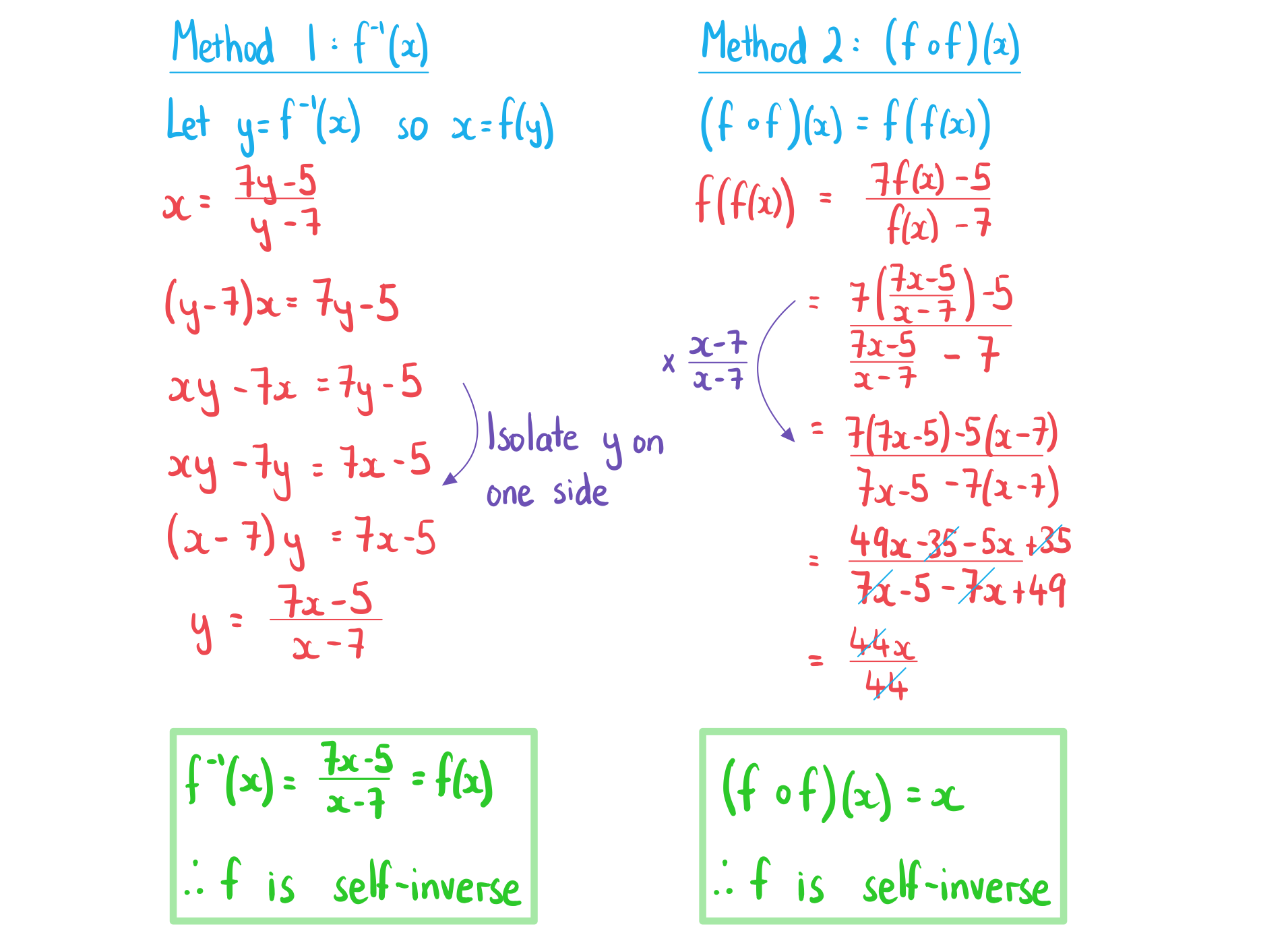Self-Inverse Functions (DP IB Analysis & Approaches (AA)): Revision Note
Did this video help you?
Self-inverse functions
What are self-inverse functions?
A function
is called self-inverse if it is equal to its inverse function
Applying
to both sides of
gives
as
of
cancels out on the right-hand side
Examiner Tips and Tricks
Knowing that a self inverse function satisfies both and
can help in harder algebraic questions.
What are examples of self-inverse functions?
Examples of common self-inverse functions include
the identity function
the reciprocal function
Linear functions with a gradient of -1
e.g.
What do the graphs of self-inverse functions look like?
The graph of a self-inverse function has reflective symmetry
The graph is unchanged by a reflection in the line

Examiner Tips and Tricks
If you are using algebra to prove that is self-inverse and get a different expression for
, try plotting both graphs on your GDC.
If they both overlap, then your
can be rearranged to give
If they do not overlap, there's a mistake in your working!
Worked Example
Use algebra to show that the function is self-inverse.


Unlock more, it's free!
Did this page help you?